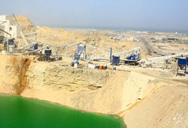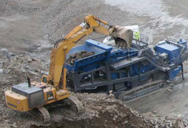- Bienvenue sur notre site
- WhatsApp: +86 187 0363 7156
- Email:[email protected]
Function Of Limestone Broyeur For Cement
- Accueil
- >
- Function Of Limestone Broyeur For Cement
Function Of Limestone Broyeur For Cement
Function Of Limestone Broyeur For Cement :

2 Major Roles of Limestone in Cement Manufacturing
2023.5.27 Step 1. Limestone mining Cement manufacturing starts from the mining of raw materials, mainly, limestone and clay. Generally, the mining method of limestone is
Read More

A review on use of limestone powder in cement-based
2018.8.30 The chemical effect of limestone powder on hydration products of cement-based materials is mainly originated from the reaction between limestone powder and
Read More

Low-temperature curing strength enhancement in cement
2017.4.28 One of the important outcomes of these influences is that for some cement-based materials containing limestone powder, after 7 d of curing, the strength
Read More

Limestone calcined clay cement and concrete: A state-of-the
2021.11.1 Limestone calcined clay cement (LC 3) is one such recently developed ternary blended cement in which the alumina from the calcined clay and the carbonate
Read More

Limestone Fillers Conserve Cement - NIST
Fig. 2: Predicted final total capillary porosity (empty and water-filled) as a function of w/cm (cm = cement + limestone) and limestone filler substitution (by mass according to
Read More

Limestone Fillers to Conserve Cement in Low w/cm
This paper utilizes Powers’ model to analyze total capillary porosity in limestone-filled cement pastes to suggest appropriate replacement levels as a function of water-to
Read More

A Fresh View on Limestone Calcined Clay Cement (LC3) Pastes
2021.6.3 In this work, the factors controlling the fresh state properties of limestone calcined clay cement (LC3) are assessed and compared to Portland and binary cements,
Read More

LIME CALCINED CLAY CEMENT (LC3): A Review - IOPscience
2021.6.1 LC3 is a type of cement by mixing of limestone, calcined clay and gypsum, a few literatures were available on LC3. This paper presents the overview of research work
Read More

Limestone specifications - International Cement Review
2021.11.23 Limestone specifications. When asked to review the suitability of limestone deposits for cement manufacture, Dr Michael Clark makes a range of
Read More

High limestone content in cement: An important
For example, the carbonation resistance of concrete with a cement with only 15 mass % limestone was equal to that of a cement with 30 or even 50 mass % limestone when the w/c ratio was reduced from 0.5 to 0.35 or
Read More

(PDF) Mining Activities, Cement Production Process and
2022.7.4 Cement has hydraulic properties like slaked lime and hardens when mixed with water. Compressive strength increases in time and reaches its practical top limit after 28 days. Mixing crushed stone ...
Read More

Use of cement in concrete according to European standard
2019.5.17 The concretes made with Portland-limestone cement or Portland-fly ash cement do not show any significantly different scaling behaviour from that of concrete made with Portland cement. Fig. 8 Scaling of air-entrained concretes (CDF test, c = 320 kg/m 3 , w/c = 0.50) made using various portland-composite cements and CEM III as a function of
Read More

Influence of limestone addition on sodium sulphate
2022.12.19 The mix design of the evaluated pastes is presented in Table 2.As activator an anhydrous sodium sulfate powder (Acros Organics, Na 2 SO 4 > 99 %) was used, which was dissolved in deionized water at 40 °C and cooled down to room temperature (20 °C) prior to use. The sodium sulfate-activated slags with replacements
Read More

Limestone Characteristics, Formation, Texture, Uses, Facts
2024.1.16 Calico or laminated sandstone. Most limestones have a granular texture. Their constituent grains range in size from 0.001 mm (0.00004 inch) to visible particles. In many cases, the grains are microscopic fragments of fossil animal shells. Limestone has two origins: (1) biogenic precipitation from seawater, the primary agents being lime ...
Read More

An Optimized Open Pit Mine Application for Limestone
2022.11.6 The limestone production scheduling for an open pit mine can be described as determining the order in which ‘blocks’ should be extracted to achieve a specific goal, while taking into account a range of physical and resource restrictions [].The availability of high-quality raw materials in sufficient quantities is critical to the success of
Read More

Low-temperature curing strength enhancement in cement
2017.4.28 The sustainability-driven quest to replace a significant portion of portland cement in concrete with other materials has led to renewed interest in limestone powders as an effective accelerator of early-age hydration and beneficial modifier of rheology [1,2,3,4,5,6,7,8,9].The addition of (calcium) carbonate to the cementitious system
Read More

2 Major Roles of Limestone in Cement Manufacturing
2023.5.27 The use of limestone powder to replace part of the cement clinker to produce Portland limestone cement (PLC) has become increasingly popular. Portland limestone cement is popular for three reasons. 1) When burning to form cement clinker, it consumes a lot of energy and releases a lot of carbon dioxide.
Read More

Calcination kinetics of cement raw meals under various CO
Abstract. The calcium looping CO 2 capture process, CaL, represents a promising option for the decarbonisation of cement plants, due to the intrinsic benefit of using the spent CO 2 sorbent as a feedstock for the plant. The generation of sufficiently active CaO from the raw meals entering the cement plant for the CO 2 capture requires calcination of these
Read More

Materials Today: Proceedings - ResearchGate
2023.8.6 Chemical composition of Portland cement, Calcined Clay, Limestone and Silica Fume. Portland cement Calcined Clay Limestone Silica Fume CaO (%) 62.73 0.56 47.56 0.21 SiO 2 (%) 20.24 45 11.77 95.2 Al 2O
Read More

8 Main Cement Ingredients Their Functions
2024.1.12 The main features of these cement ingredients along with their functions and usefulness or harmfulness are given below: Lime: Lime is calcium oxide or calcium hydroxide. The presence of lime in a sufficient
Read More

Simulation of the microstructure formation in hardening self
2013.2.19 With the development of concrete technology, fillers are widely used in high performance concrete to improve its properties. Among them, limestone powder is popularly added in self-compacting concrete to gain good flowability. However, by lack of experimental data, several materials properties after the addition of limestone powder are
Read More

(PDF) Limestone reaction in calcium aluminate cement
2015.10.31 Porosity as a function of calcium sulfate for non-substituted (a) and substituted systems with 20 wt.% of limestone (b). Comparison between MIP and thermodynamic simulation.
Read More

Limestone Types, Properties, Composition, Formation, Uses
2023.10.21 Limestone is a sedimentary rock primarily composed of calcium carbonate (CaCO3) in the form of mineral calcite or aragonite.It is one of the most common and widely distributed rocks on Earth, with a wide range of uses in various industries and natural settings. Limestone forms through the accumulation and compaction of marine
Read More

Low-Temperature Curing Strength Enhancement in
An additional consideration is the solubility of the calcite polymorph of limestone as a function of temperature that is given by Plummer and Busenberg [10] as: log(K sp) = -171.9065 - 0.077993T + 2839.319/T + 71.595log(T) (1), ... portland limestone cement (PLC) with about 12 % LS and a second PLC (grey)
Read More

Limestone fillers cement based composites: Effects of blast furnace ...
2014.1.31 Limestone filler is a raw material that is already used in several applications like paints, bricks, and bituminous mixtures. Moreover, and particularly in Belgium, classical additions for concrete like fly ashes and granulated blast furnace slags are becoming rare; there is a need for new additions that could have a positive effect on
Read More

fr/broyeur à percussion limestone occasion nigeria.md at
Contribute to hedaokuan/fr development by creating an account on GitHub.
Read More

DONE-IOPConferenceSeries Widya Annisa Universitas
the chemical constituents of Coral Limestone are CaO 83.35%, Fe2O3 6.92%, SrO 9.35% and ZrO2 3.25%. The prospect of Coral Limestone can be used in various industrial fields. Coral Limestone can be used in the mining industry, the cement industry, the sugar industry, ceramic raw materials, building materials, agricultural and road stabilizers.
Read More

Effects of limestone petrography and calcite microstructure
2016.12.14 Limestone represents the main raw material for ordinary Portland cement clinker production. In this study eight natural limestones from different geological environments were chosen to prepare raw meals for clinker manufacturing, aiming to define a parameter controlling the burnability. First, limestones were characterized by X-Ray
Read More

Durability performance of Portland limestone cement mortar
2021.3.4 The benefits of partial replacement of Portland cement by limestone are well established. This study investigates the impact of zinc and butyl stearates, as water-repellent additives, on the compressive strength, flexural strength, water penetration, absorption, chloride migration, density, drying shrinkage, and thermal expansion of Portland
Read More

Effect of chemical composition of aggregate on
2017.8.15 The adhesion function of limestone with asphalt may depend on the outermost orbital electrons of Ca 2+ migrating to the active functional group in the asphalt. This would result in the formation of a new chemical bond. On the other hand, the adhesion function of the granite aggregate only depends on its physical adhesion with asphalt.
Read More

Assessing the chemical involvement of limestone powder in
2017.2.9 This study aims to investigate the effect of limestone powder (LP) on the reaction of sodium carbonate activated slag. The results show that the incorporated LP up to 30% improves the strength development, especially at advanced curing ages. A slightly accelerated reaction is observed for samples containing low amount of LP (≤5%), while
Read More

sbm/sbm m a9langeur broyeur granite mill.md at main
Contribute to chengxinjia/sbm development by creating an account on GitHub.
Read More

Modeling of Hydration, Compressive Strength, and
2017.1.26 Keywords: portland-limestone cement conc rete; hydration; co mpressive strength; carbonation; model 1. Introduction Portland-limestone cement (PLC) is manufactured by intergrinding Portland cement clinker with various contents of limestone. The limestone is more easily ground than clinker, and becomes concentrated in the finest
Read More

Use of a reference limestone fine aggregate to study the
2019.1.31 The cement used for the manufacture of mortars is the same as the one used for the manufacture of concrete. A limestone filler from Carmeuse in Belgium is also used. Its density measured with the helium pycnometer is 2.72 g/cm 3 and its specific surface area according to the standard EN 196-3 is 3170 cm 2 /g. A volumetric
Read More

About Limestone SpringerLink
2021.7.15 Cement grade high-quality limestone is easily and abundantly available across India. Limestone, being an essential constituent of all types of cement manufacturing, is largely consumed in the cement industry to the extent of nearly 85% or more of its production, which is the highest from among all other limestone-consuming industries
Read More

Analysis of material flow and consumption in cement
2016.1.20 The function of the kiln in the cement industry is to first convert limestone into lime, then react it with silica, aluminum oxide, ... In the surveyed cement plant, 1.21 t of limestone, 0.09 t of silica, and 5.81 t of air are required to produce one ton of cement (P.O.42.5); meanwhile, 4.79 t of waste gas is discharged into the atmosphere and ...
Read More
- Spéciale Libye Broyeurs Bureau De
- comment faire des couvertures de chaussures costume
- vente de machines et moulins
- meilleur équipement de Afrique concasseur de granit en Nouvelle Caldonia
- broyeurs a boulets a vendre dans le sud du chili
- sortes de répondre à la séparation magnétique
- différence entre concasseur à machoires et concasseur à percussion
- equipement de meulage pour calcaire en Nouvelle Caldonia
- concasseur de mines d or en australie
- usines de gravier doccasion en Afrique du Sud
- la presentation de la lettres de mon moulin
- fournisseurs de concasseurs en afrique du sud
- fabricants de seche de sable de fonderie Site
- fournisseur des concasseur de pierre en allemand
- fabricants de concasseur agrégées en Nouvelle Caldonia
